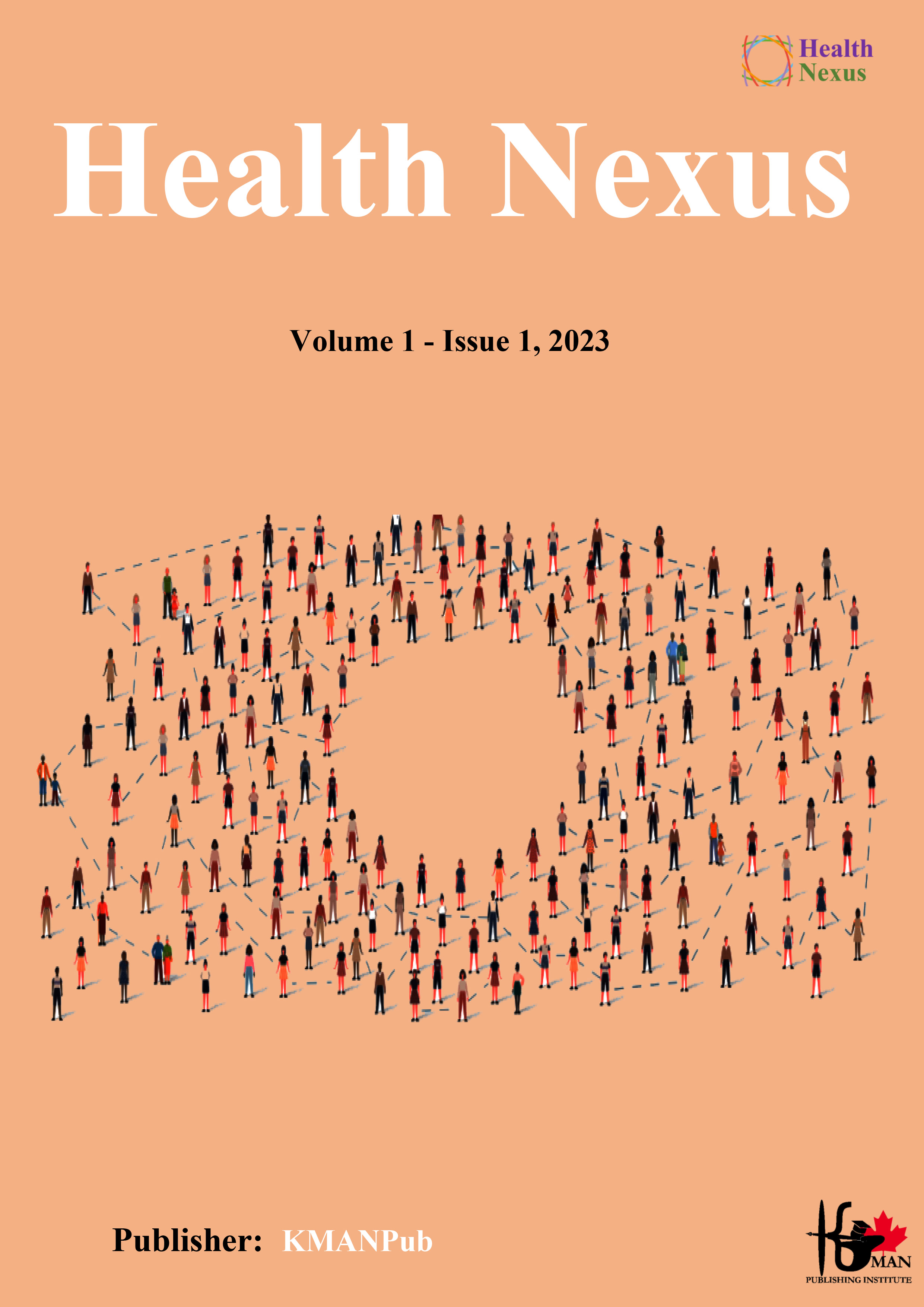Review of Factors Influencing ACL Tear in Football Players: A Descriptive Analysis
Keywords:
ACL injury, football players, biomechanics, injury prevention, neuromuscular training, playing surface, workload managementAbstract
This narrative review aims to explore the key factors influencing ACL injuries in football players. The review employs a descriptive analysis method, synthesizing evidence from peer-reviewed articles published between 2014 and 2024. Relevant studies were identified through systematic searches of databases such as PubMed, Scopus, and Web of Science using keywords like "ACL injury," "football players," "biomechanics," and "prevention." Articles were included based on their focus on ACL injuries in football, encompassing epidemiological data, biomechanical analyses, and prevention strategies. Data from these studies were categorized into thematic areas such as intrinsic and extrinsic risk factors, injury mechanisms, and prevention methods. Intrinsic factors, including anatomical variations, hormonal influences, genetic predispositions, and neuromuscular deficits, significantly increase the risk of ACL injuries. Extrinsic factors, such as playing surfaces, footwear, workload management, and competition intensity, further compound injury risk. Non-contact mechanisms, including improper landing and pivoting, are the most common causes of ACL tears, driven by biomechanical and neuromuscular deficiencies. Evidence-based prevention strategies, such as the FIFA 11+ program and neuromuscular training, have demonstrated efficacy in reducing injury rates. Gender-specific considerations, particularly for female athletes, and the use of advanced wearable technology were highlighted as critical areas for targeted intervention. ACL injuries in football result from a complex interplay of intrinsic and extrinsic factors. Effective prevention requires a multidisciplinary approach combining structured injury prevention programs, neuromuscular training, advanced equipment, and education for players and coaches. Addressing gaps in gender-specific strategies and global disparities is essential for further reducing injury rates and promoting long-term player health.
Downloads
References
1. Bram JT, Magee LC, Mehta N, Patel NM, Ganley TJ. Anterior Cruciate Ligament Injury Incidence in Adolescent Athletes: A Systematic Review and Meta-Analysis. The American Journal of Sports Medicine. 2020;49(7):1962-72. [PMID: 33090889] [DOI]
2. Krutsch W, Memmel C, Krutsch V, Angele P, Tröß T, Fünten Kad, et al. High Return to Competition Rate Following ACL Injury – A 10‐year Media‐based Epidemiological Injury Study in Men's Professional Football. European Journal of Sport Science. 2019;20(5):682-90. [PMID: 31354061] [DOI]
3. Brophy RH, Wojtys EM, Mack C, Hawaldar K, Herzog MM, Owens BD. Factors Associated With the Mechanism of ACL Tears in the National Football League: A Video-Based Analysis. Orthopaedic Journal of Sports Medicine. 2021;9(11). [PMID: 34778486] [PMCID: PMC8579343] [DOI]
4. Lai CCH, Feller JA, Webster KE. Fifteen-Year Audit of Anterior Cruciate Ligament Reconstructions in the Australian Football League From 1999 to 2013: Return to Play and Subsequent ACL Injury. The American Journal of Sports Medicine. 2018;46(14):3353-60. [PMID: 30388022] [DOI]
5. Secrist E, Bhat SB, Dodson CC. The Financial and Professional Impact of Anterior Cruciate Ligament Injuries in National Football League Athletes. Orthopaedic Journal of Sports Medicine. 2016;4(8). [PMID: 27631017] [PMCID: PMC5010185] [DOI]
6. Montalvo AM, Schneider D, Silva PL, Yut L, Webster KE, Riley MA, et al. ‘What’s My Risk of Sustaining an ACL Injury While Playing Football (Soccer)?’ a Systematic Review With Meta-Analysis. British Journal of Sports Medicine. 2018;53(21):1333-40. [PMID: 29599121] [PMCID: PMC6642026] [DOI]
7. Leppänen M, Pasanen K, Kujala UM, Vasankari T, Kannus P, Äyrämö S, et al. Stiff Landings Are Associated With Increased ACL Injury Risk in Young Female Basketball and Floorball Players. The American Journal of Sports Medicine. 2016;45(2):386-93. [PMID: 27637264] [DOI]
8. Xiao M, Lemos JL, Hwang C, Sherman SL, Safran MR, Abrams GD. Increased Risk of ACL Injury for Female but Not Male Soccer Players on Artificial Turf Versus Natural Grass: A Systematic Review and Meta-Analysis. Orthopaedic Journal of Sports Medicine. 2022;10(8). [PMID: 35990873] [PMCID: PMC9382072] [DOI]
9. Olivares-Jabalera J, Fílter-Ruger A, Dos’Santos T, Afonso J, Villa F, Morente-Sánchez J, et al. Exercise-Based Training Strategies to Reduce the Incidence or Mitigate the Risk Factors of Anterior Cruciate Ligament Injury in Adult Football (Soccer) Players: A Systematic Review. International Journal of Environmental Research and Public Health. 2021;18(24):13351. [PMID: 34948963] [PMCID: PMC8704173] [DOI]
10. Collings TJ, Diamond LE, Barrett R, Timmins RG, Hickey J, Moulin Wd, et al. Strength and Biomechanical Risk Factors for Noncontact ACL Injury in Elite Female Footballers: A Prospective Study. Medicine & Science in Sports & Exercise. 2022;54(8):1242-51. [PMID: 35320148] [DOI]
11. Rekik R, Bahr R, Cruz FC, Read P, Whiteley R, D’Hooghe P, et al. Mechanisms of ACL Injuries in Men’s Football: A Systematic Video Analysis Over Six Seasons in the Qatari Professional League. Biology of Sport. 2023;40(2):575-86. [PMID: 37077782] [PMCID: PMC10108748] [DOI]
12. Rekik R, Tabben M, Eirale C, Landreau P, Bouras R, Wilson MG, et al. ACL Injury Incidence, Severity and Patterns in Professional Male Soccer Players in a Middle Eastern League. BMJ Open Sport & Exercise Medicine. 2018;4(1):e000461. [PMID: 30498577] [PMCID: PMC6241976] [DOI]
13. Gans I, Retzky J, Jones LC, Tanaka MJ. Epidemiology of Recurrent Anterior Cruciate Ligament Injuries in National Collegiate Athletic Association Sports: The Injury Surveillance Program, 2004-2014. Orthopaedic Journal of Sports Medicine. 2018;6(6). [PMID: 29977938] [PMCID: PMC6024527] [DOI]
14. Khan MQ, Siddiqui A, Yaqoob U, Yaqub MD, Khan OJ, ul-Haq F. Post-Football Gonathrosis: Injuries and Surgeries Are a Risk. Cureus. 2018. [DOI]
15. Paolo SD. Two-Dimensional and Three-Dimensional Biomechanical Factors During 90° Change of Direction Are Associated to Non-Contact ACL Injury in Female Soccer Players. International Journal of Sports Physical Therapy. 2023;18(4). [PMID: 37547837] [PMCID: PMC10399106] [DOI]
16. Paolo SD, Nijmeijer EM, Bragonzoni L, Dingshoff E, Gokeler A, Benjaminse A. Comparing Lab and Field Agility Kinematics in Young Talented Female Football Players: Implications for ACL Injury Prevention. European Journal of Sport Science. 2022;23(5):859-68. [PMID: 35400311] [DOI]
17. Paolo SD, Zaffagnini S, Pizza N, Grassi A, Bragonzoni L. Poor Motor Coordination Elicits Altered Lower Limb Biomechanics in Young Football (Soccer) Players: Implications for Injury Prevention Through Wearable Sensors. Sensors. 2021;21(13):4371. [PMID: 34202369] [PMCID: PMC8271557] [DOI]
18. Ngatuvai MS, Yang J, Kistamgari S, Collins CL, Smith GA. Epidemiological Comparison of ACL Injuries on Different Playing Surfaces in High School Football and Soccer. Orthopaedic Journal of Sports Medicine. 2022;10(5). [PMID: 35547616] [PMCID: PMC9083053] [DOI]
19. Kapoor A. Faulty Moves in Kabaddi and Football Causes of Higher Incidence of ACL Rupture. Moj Sports Medicine. 2018;2(2). [DOI]

Downloads
Additional Files
Published
Submitted
Revised
Accepted
License
Copyright (c) 2025 Naeges Ghilich Afshar (Author); Mostafa Soltani (Corresponding Author); Hajar Naderinasab (Author)

This work is licensed under a Creative Commons Attribution-NonCommercial 4.0 International License.















